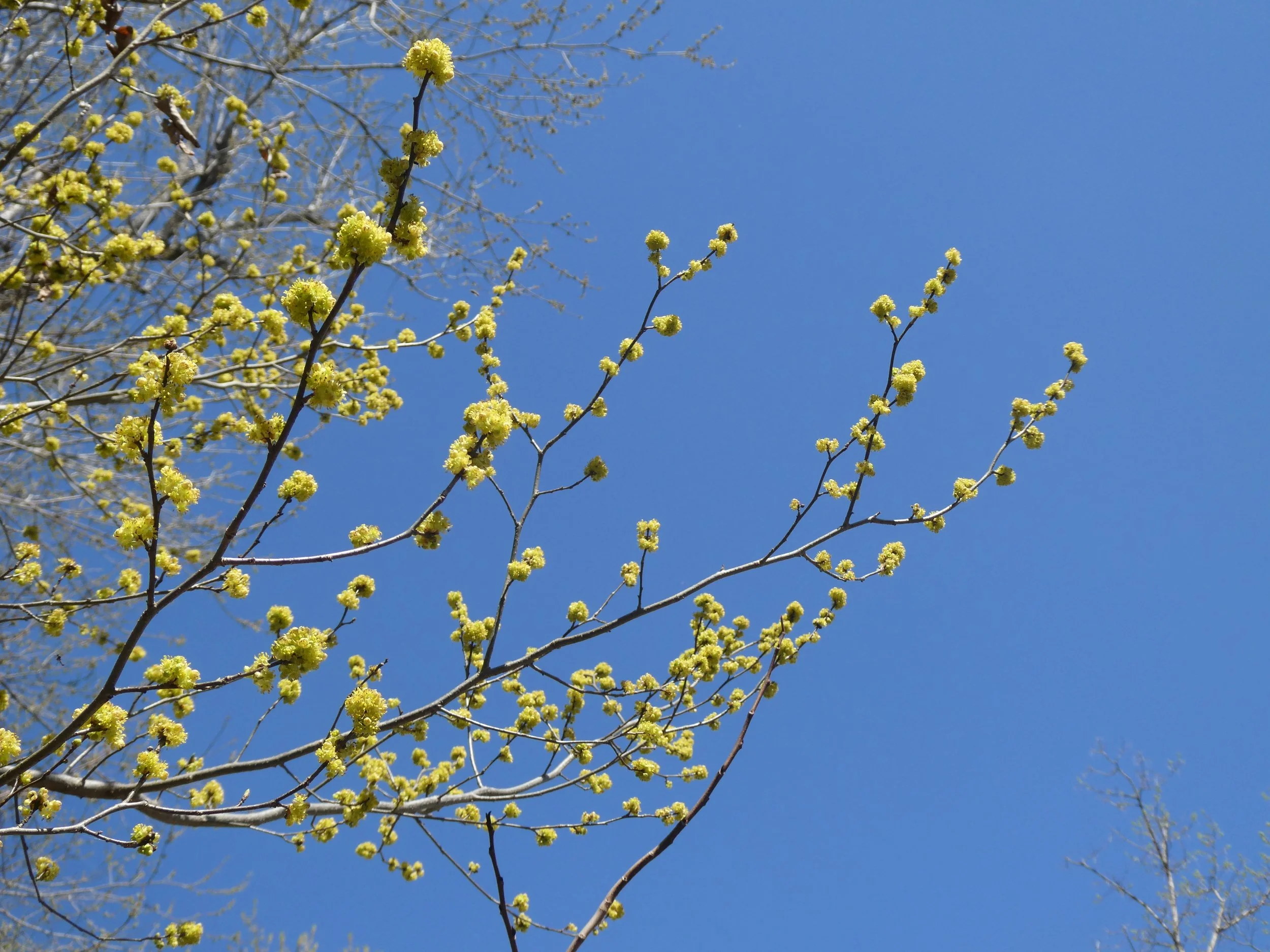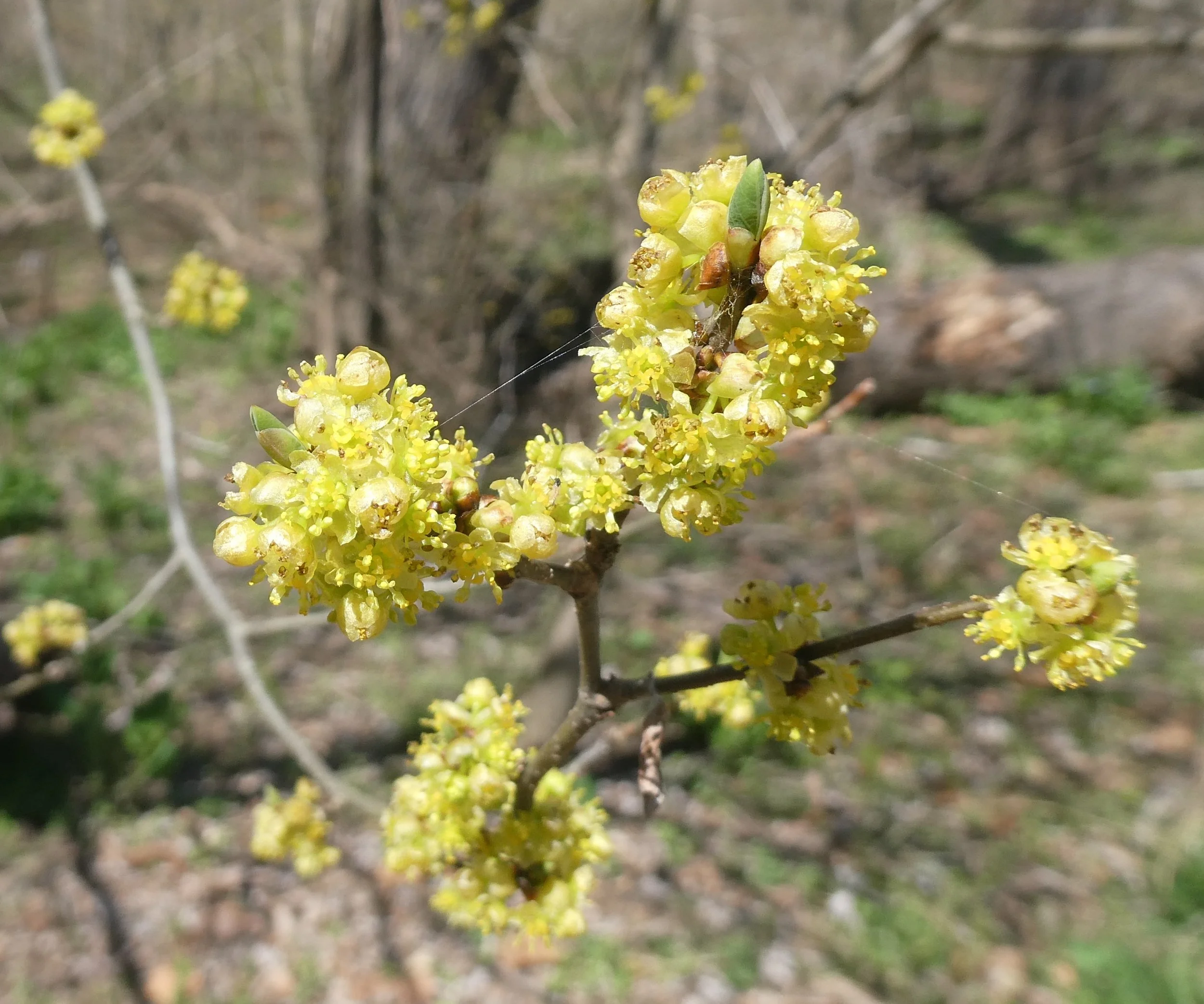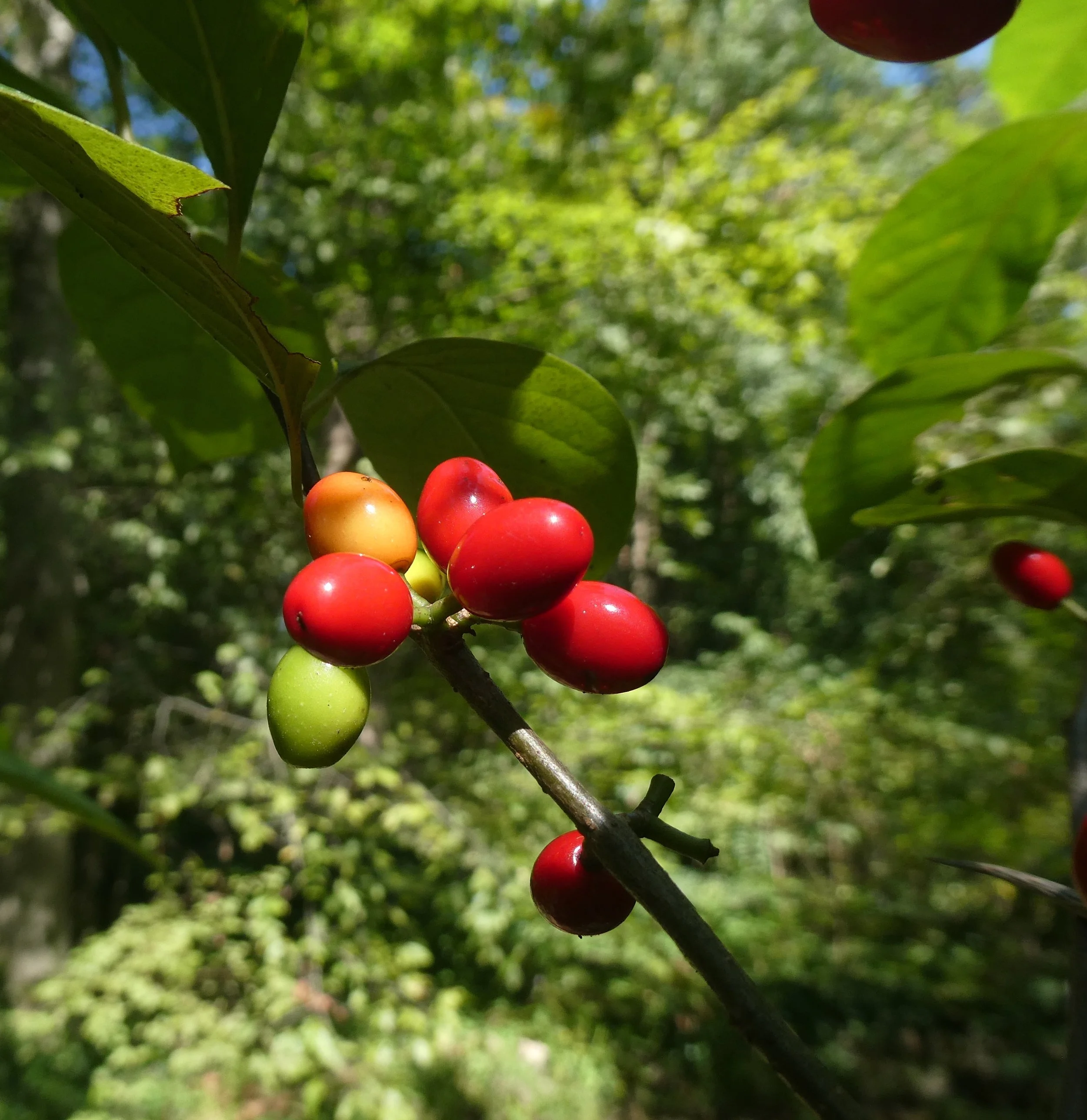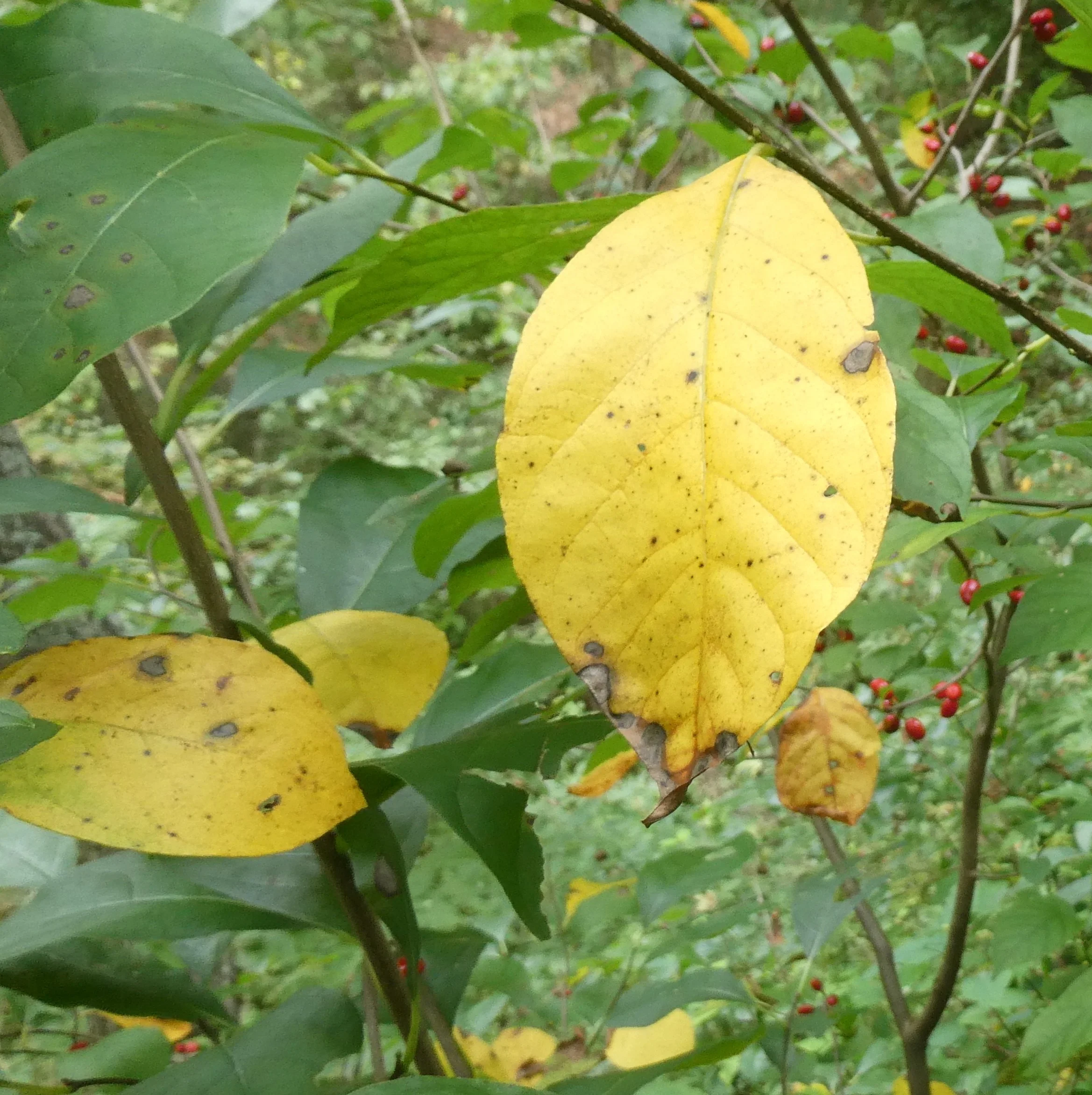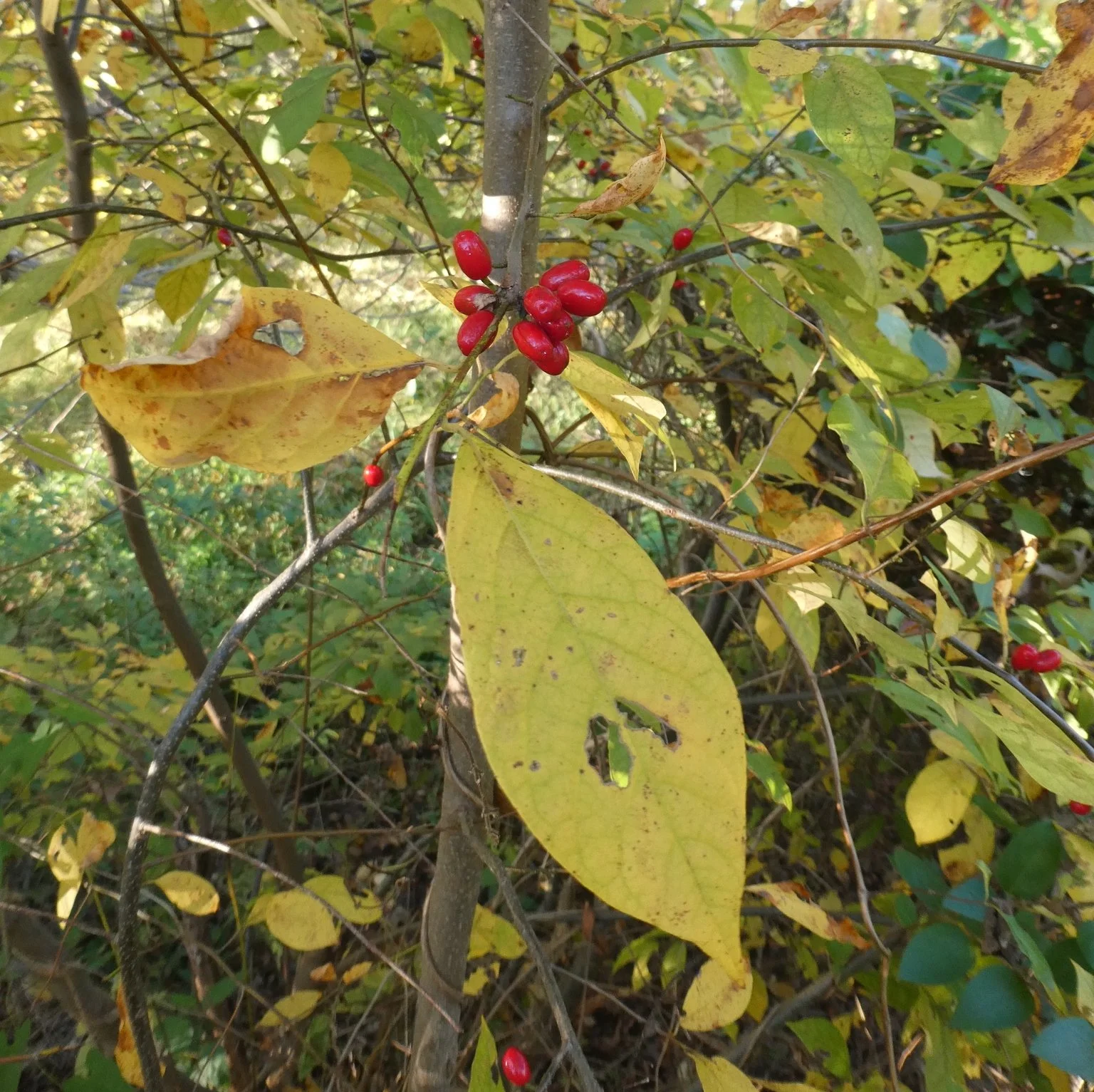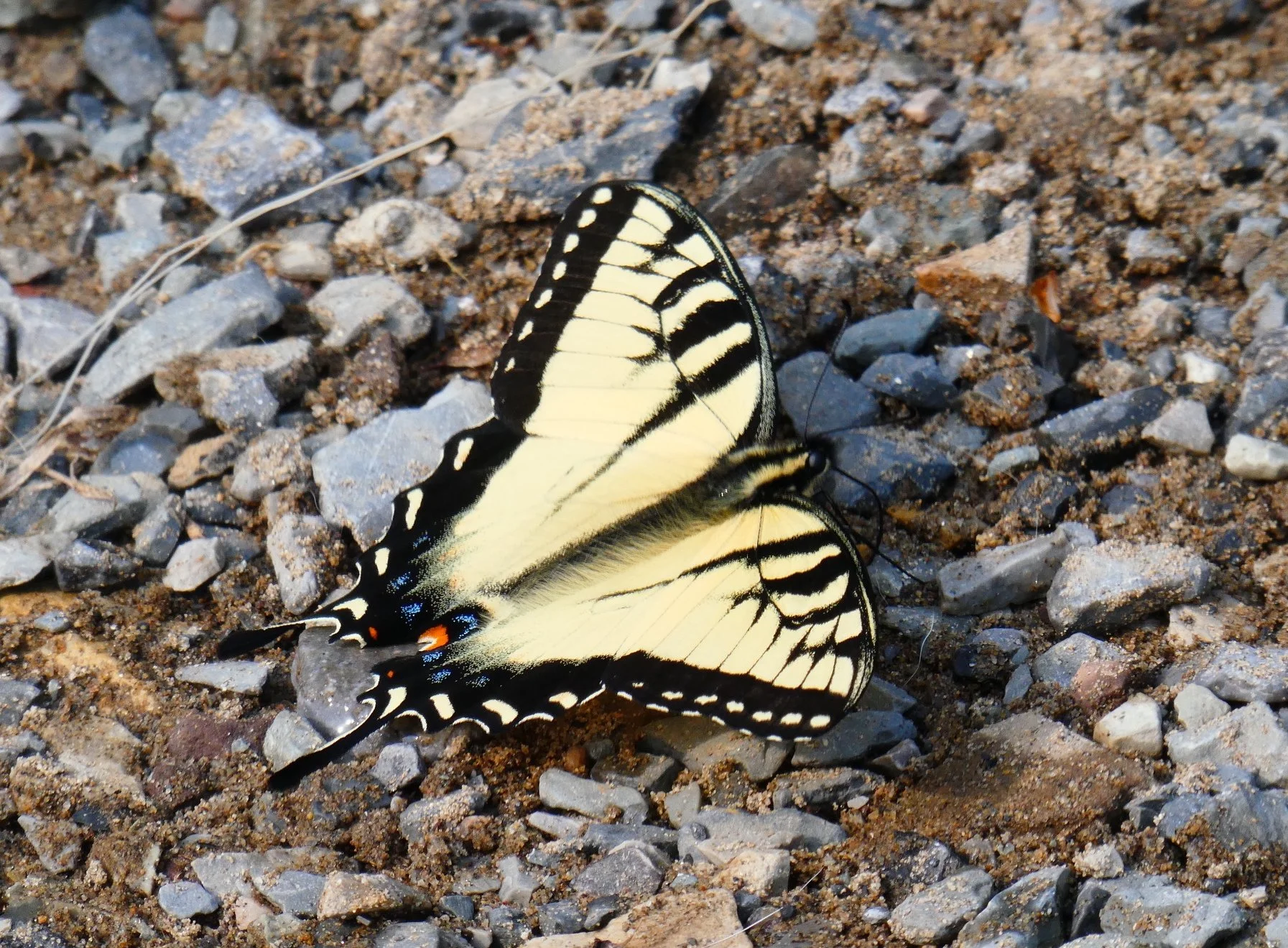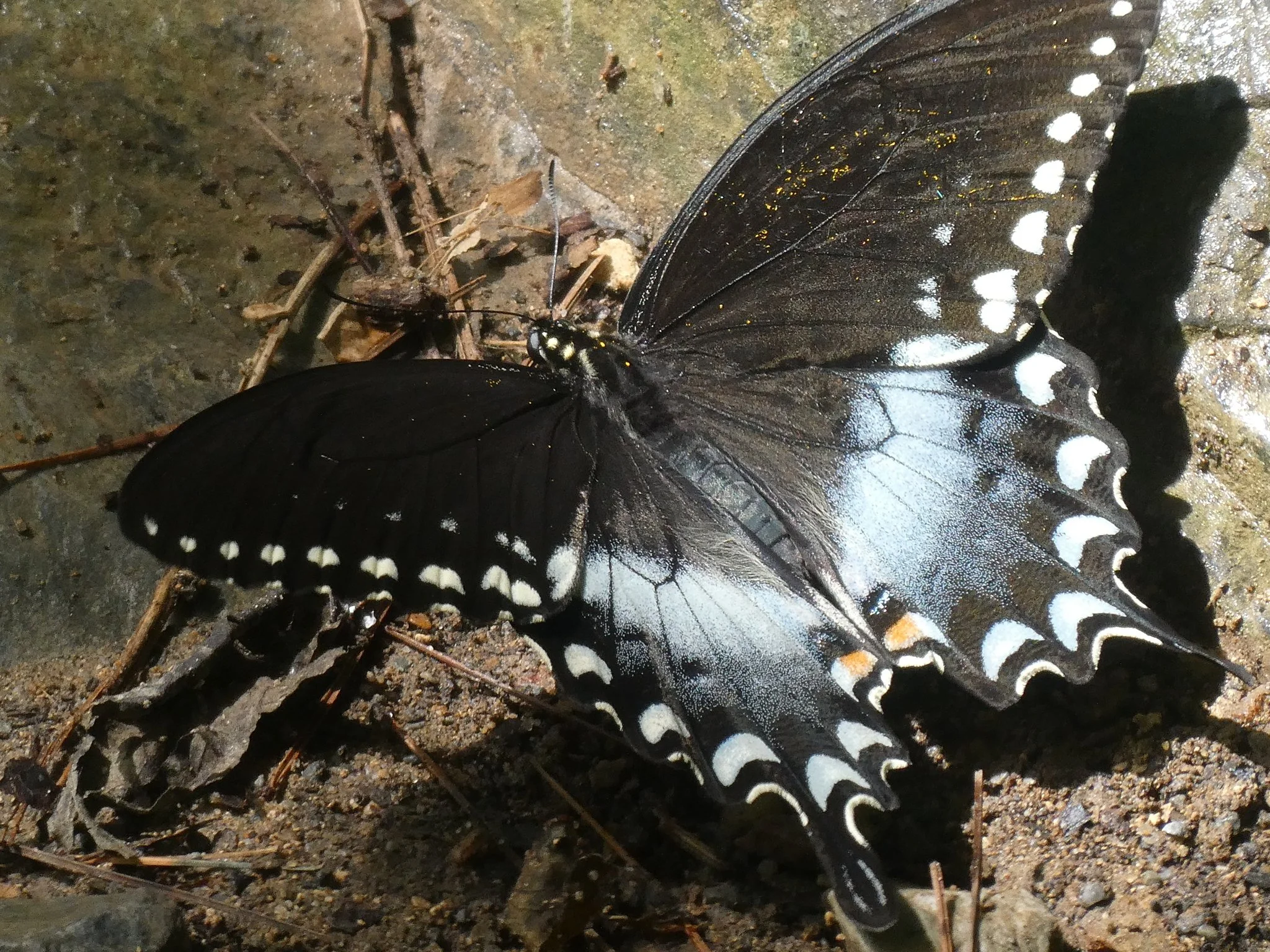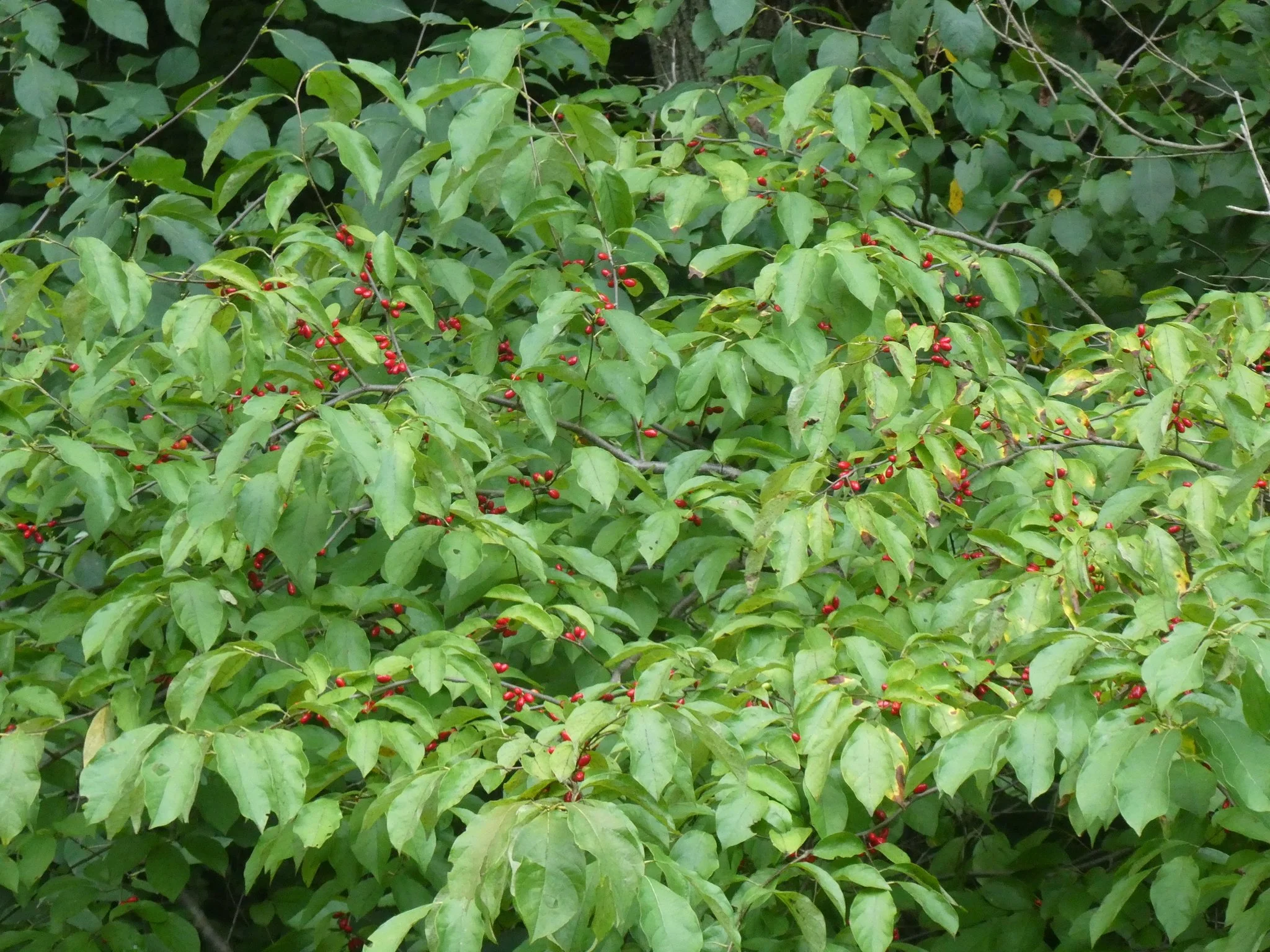Plant of the Week 2: Spicebush (Lindera benzoin)
It’s hard to miss the subtle beauty of Spicebush when taking a walk through nature at the end of March. Its early spring flowers, which bloom in March and April, liven up a wooded landscape with a soft yellow hue long before leaves begin to emerge.
Bright yellow flowers, although small, occur in dense clusters along the branches. Spicebush is dioecious, which means that male and female flowers are found on separate plants. The male flowers are usually larger and showier than their female counterparts. Since Spicebush is dioecious, only the female plants will produce fruit when cross-pollination happens.
Spicebush fruit is an ovoid drupe (berry) that starts out green and matures to a bright glossy red around September. Many song and game birds love eating these fruits, which are an important fall food source with a high lipid (fat) content. These fruits are also edible to humans (though not super tasty) and have a peppery taste to them.
The leaves of Spicebush, while appearing rather ordinary, stand out among other woodland plants with their aroma. Breaking a leaf or bending a twig reveals a spicy, peppery, and sometimes citrusy fragrance. Even brushing against some leaves can bring out this pleasant scent. During the fall, the leaves turn a beautiful yellow gold color. This, paired with the bright red berries, creates a lovely scene.
Spicebush is a part of the Lauraceae family, which contains many aromatic plant species. All parts of spicebush have a spicy fragrance, which is useful in deterring herbivores. Deer usually do not go for spicebush, but plants can be vulnerable to browsing, especially when there are limited food sources nearby. While being relatively unpalatable to mammalian herbivores, several butterfly species will much on the leaves and use spicebush as a larval host, including the Eastern Tiger Swallowtail and aptly named Spicebush Swallowtail.
Eastern Tiger Swallowtail (Papilio glaucus)
Spicebush Swallowtail (Papilio troilus)
Spicebush is most commonly found in rich deciduous forests. Since they prefer moist soils, they are frequent inhabitants along stream banks, bottomlands, and towards the bottom of wooded slopes. While quite shade tolerant, having partial sun will allow for a better form with a better flower and berry yield.
There are no shortage of local parks where Spicebush can be found, as it is native to every county in Maryland. The C & O Canal and along the Potomac River are excellent places to find Spicebush. Brookside Gardens, along with both Lake Needwood and Lake Bernard Frank, are also really good options.
Spicebush can be utilized in a variety of ways around the home landscape. It is great in a shaded woodland garden, as a shrub border, or along a stream or pond.

